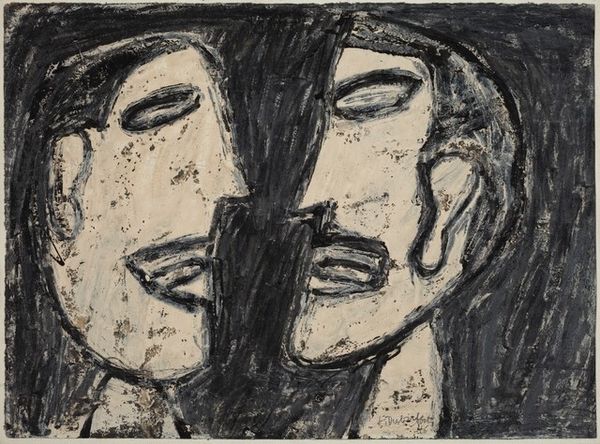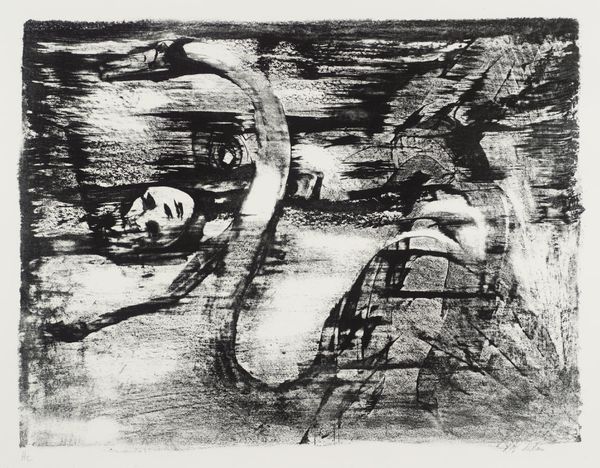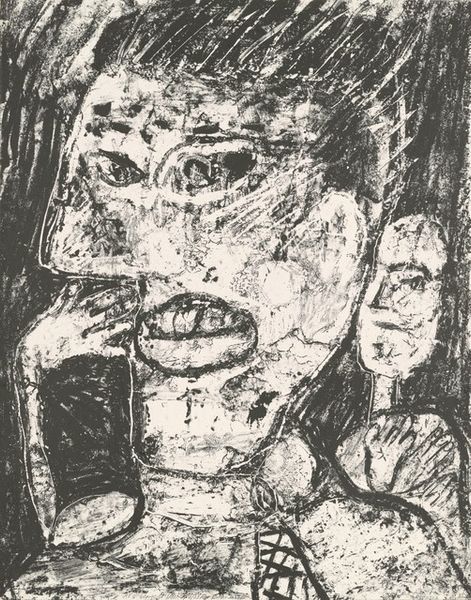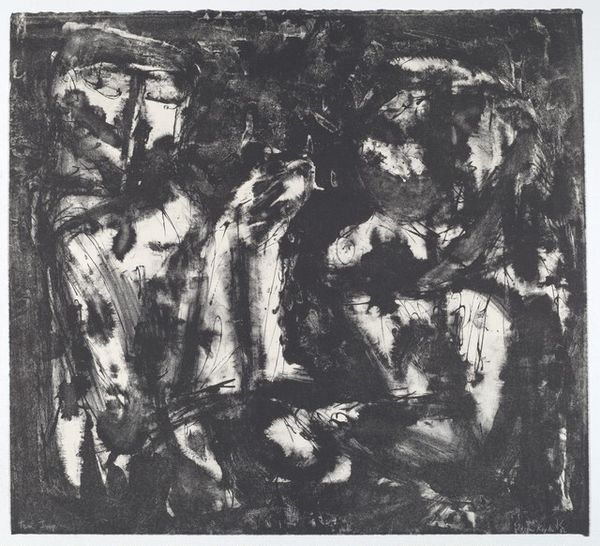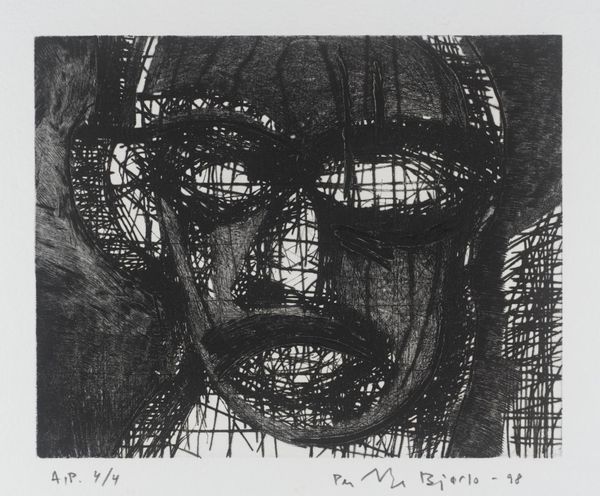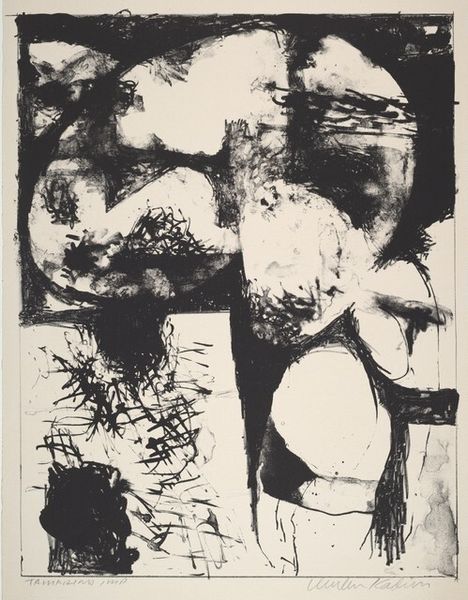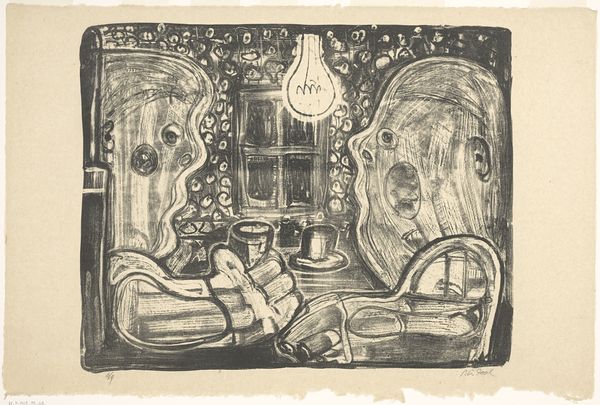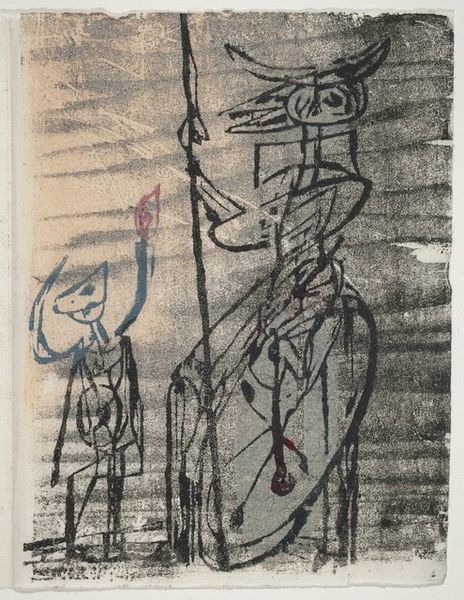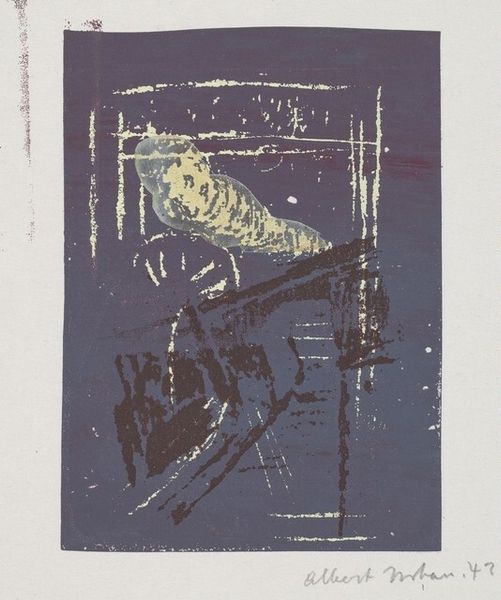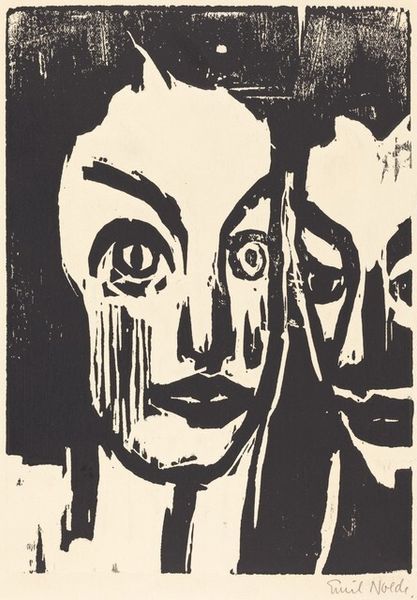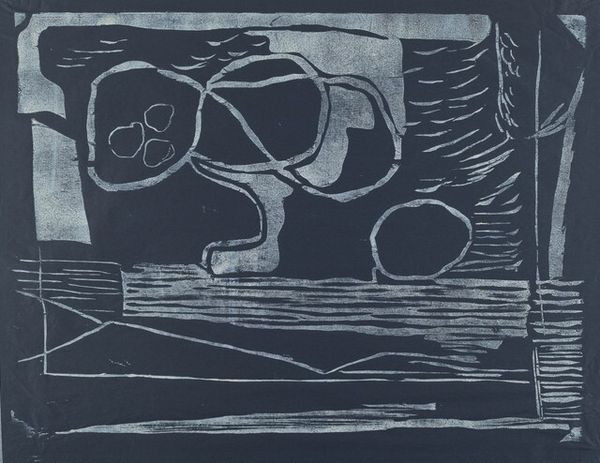
Dimensions: Image: 320 x 420 mm Sheet: 365 x 488 mm
Copyright: National Gallery of Art: CC0 1.0
Curator: This stark print, entitled "City Folk," was completed by Leon Goldin in 1948. The sharp lines and raw textures are striking, wouldn't you agree? Editor: Absolutely, it feels raw. It’s like staring into someone's anxieties about urban life, rendered in ink. There's this fragmented, almost haunted quality about the faces. I can practically hear the city’s din through the page. Curator: Considering it was produced in the post-war era, one could read this as an expressionistic take on displacement and alienation prevalent at that time. Note the almost caricatured features – exaggerated eyes, the sense of anonymity in the figures. Editor: Anonymity for sure. They look lost, like ghosts in a machine. And the technique! So much vigorous mark-making that it feels like scratching at the surface of something – revealing what, I wonder? Is it meant to excavate feeling? Curator: I'd say the line work definitely lends itself to that. If you examine the cultural and political landscape of the late 1940s, with the burgeoning Cold War anxieties and the legacy of the Second World War, this piece speaks volumes. It asks us to consider the psychological toll of living in a world constantly on edge. Editor: Makes you wonder what sort of personal demons Goldin himself was wrestling with when creating this. I mean, beyond the broader social context, there's a distinctly internal struggle happening here too. Did he intend a wider conversation? A private purge? Maybe both? Curator: Precisely, there’s intersectionality at play. These historical currents aren't divorced from personal experiences, and the genius of the work is the convergence of both, speaking to this exact struggle, a universal dread expressed through a subjective experience of living in this specific time and place. Editor: I see your point; it works on multiple levels. Now, I keep thinking that the more chaotic this piece is, the closer Goldin came to expressing a truth; sometimes beauty doesn't soothe - it disturbs, because it holds up a mirror to chaos that is uncomfortable to sit with. Curator: In closing, what resonates is this artist's ability to render human experiences, those universally and uniquely felt in a moment using just stark lines and sharp angles that provoke continuous conversation, making it more than just art; it's a call to engage with our shared histories. Editor: And perhaps an invitation to peer a bit closer into the anxious depths that link our modern lives together; Goldin tapped into something lasting, a vibe still echoing in our steel and glass landscapes.
Comments
No comments
Be the first to comment and join the conversation on the ultimate creative platform.
